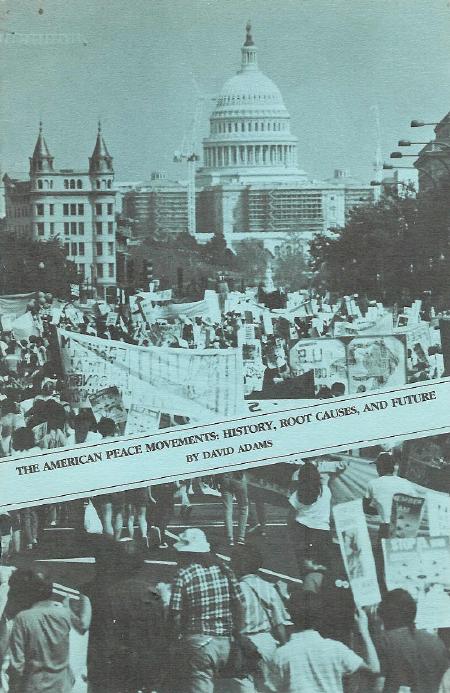Stories
Psychology for Revolutionaries
Psychology for Peace Activists
Why there are so few women warriors
The Seville Statement on Violence
A theory of mental illness
* * *
By the summer of 1984, I had decided to turn Psychology for Revolutionaries into Psychology for Peace Activists, but in order to move forward with peace activists, I needed to know the historical context, so I searched for good histories of the American Peace Movements, and could not find any that were adequate. The few histories available were so anti-communist that they censured out the actions involving the left. That meant I would have to do my own original research, and as long as I was doing it, I might as well write it up for another book. That's how my little book, The American Peace Movements (APM), came to be written.
The critierion for inclusion in APM was very simple; a movement was included if had mobilized more than a million people. This immediately made it different from the histories that had censored Left involvement, because it meant that I would include the large, Left-led mobilizations for peace and against fascism prior to World War II and again crystallized around the Wallace campaign for the Presidency after the War.
To some extent I could write the history firsthand as a participant in the New Left movement against the Vietnam War and in the Nuclear Freeze. For the other movements that involved more than a million people, I was able to find good histories from which I could take the needed information.
I found that each movement was a reaction to a particular war and ended after the war was over. Further, I found that the leadership of each movement had to be constructed anew, because those who had been in the leadership of the previous movement, except for a few extraordinary individuals, were not able to work well with those who took the initiative for the new movement.

Cover of The American Peace Movements. Click on photo to enlarge.
I wanted to put APM directly into the hands of activists by selling it for only a dollar, but all of the publishers that I contacted wanted to charge much more. So I ended up publishing the book myself, using the Advocate Press that we had set up during the New Left days of AIM, and distributing it through the growing movement for a Nuclear Freeze. This was quite successful and I was able to several thousand of the books for one dollar apiece. I ran through an initial printing of several thousand copies and ordered a second printing. I still have the flyers that I used at the time to sell it, and rough lists of sales for 1986, 1987, and 1988 in the back of three copies of the book. There are hundreds of notes for individual sales, but there is also "sent 300 to NCASF (National Council of American-Soviet Friendship) and 600 to US Peace Council," as well as 25 to the Peace Museum of Chicago, 330 to Northern Sun (a mail-order house), and 72 copies I sold at a stand at the New York Book Fair.
As usual when you break new ground, you meet resistance from the establishment, in this case centered around anti-communism. I sent the book for review to the appropriate pacifist journal, Peace and Change, whose editor was the leading academic historian of the peace movement, Lawrence S. Wittner. Wittner's own review of the period after World War II had deliberately omitted the role of the left and the communists. I mentioned this in my letter of submission, and added that:
I hope that reviews of this book will be able to rise above such past practice and engage the contents on their own merits. Were it simply an academic question, I would not engage you in this matter, but as shown in this book, the question of anti-communism is of central concern to the future of the peace movement, just as it has been central to its past. Not for me, but for the peace movement itself, I ask you to give special consideration to this matter.
Wittner wrote back on July 16, 1986:
I'm sorry to report that my co-editor and I have decided not to review your pamphlet, The American Peace Movements, in Peace and Change. We publish fairly few reviews, as there is little space for them, and therefore we must be very selective. Sorry.
When the two largest peace movements of the time, the Nuclear Freeze and SANE, the committee for a Sane Nuclear Policy, decided to merge their offices and chapters in 1986, the merger committee chose two essays for the merger booklet, an excellent piece on racism by Jack O'Dell and an essay by me based on The American Peace Movements, including the important role of the Left and the working class. As I describe under the Nuclear Freeze Movement, this caused further controversy.
From my studies of the American Peace Movements, I learned that to be fully successful, we need a new kind of movement that is not directed only against a particular war, but against the entire culture of war, as I have written in the conclusion of an updated version of APM that is available here on my personal website on the Internet.
 |
Stages
1986-1992
Fall of Soviet Empire
1992-1997
UNESCO Culture of Peace Programme